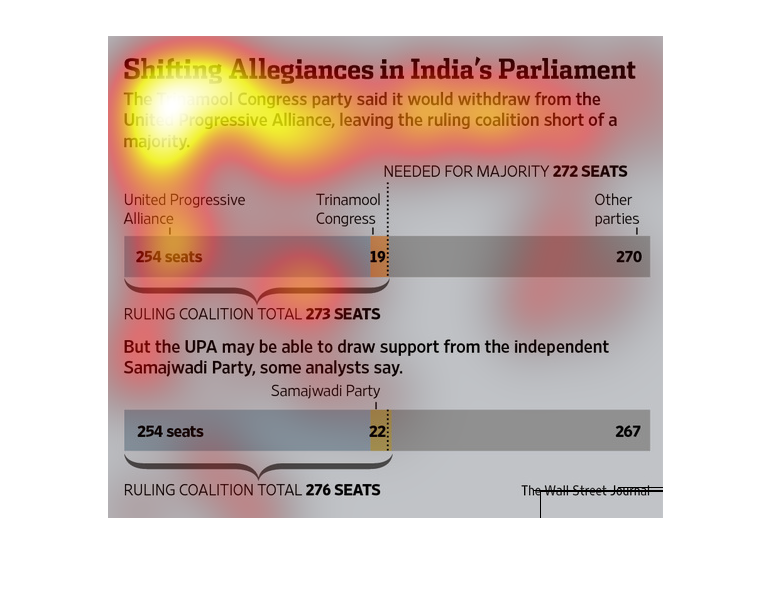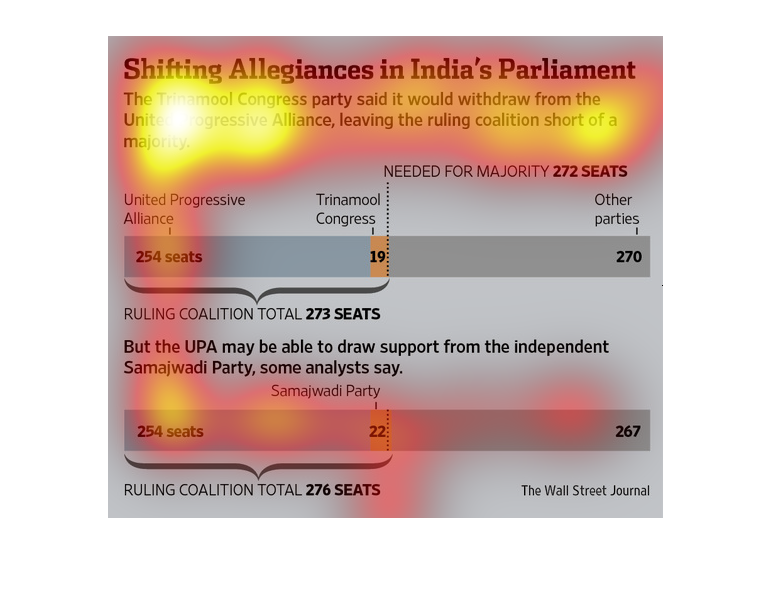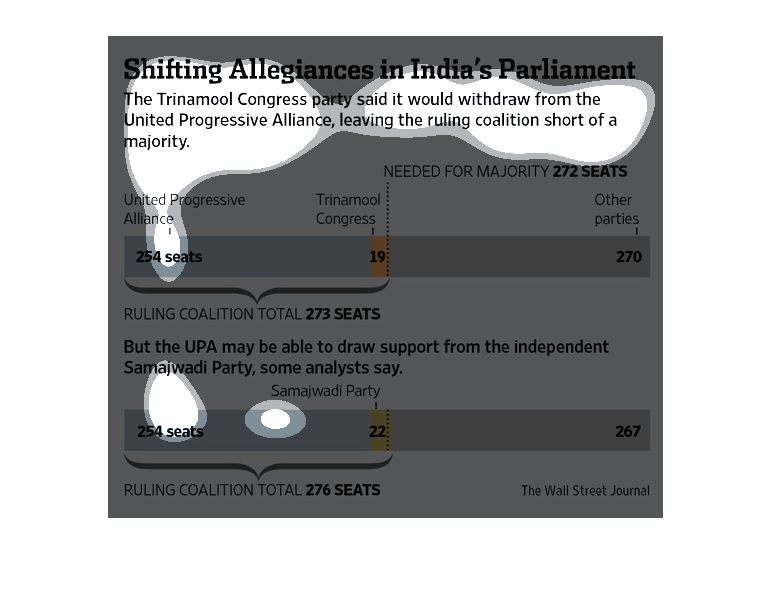
This chart shows shifting allegiances in India's parliament. The subheading reads: The Trinamool
congress party said it would withdraw from the United Progressive Alliance, leaving the ruling
coalition short of a majority. The graph references the impact the withdrawal of the congress
party will have.


India's parliament has decided to shift alliances. There are 272 seats and a majority chose
to side with the United Progressive Allegiance. The total of the ruling collation is 276 seats.


India's parliament is breaking up into little tiny factions which threatens to affect the
stability of the state. The factions are trying to leverage their votes for favors, as is
depicted in this graph.


This chart describes shifting allegiances in India's parliament. Specifically, the Trinamool
congress party said it would withdraw from the United Progressive Alliance.


This figure describes the change in political makeup of India's Parliament. Specifically,
it shows the changing coalition that makes up the majority of the parliament. The United Progressive
coalition is losing the Trinamool party which puts its majority at risk.


This chart details the shifting allegiances between parties in India's parliament, and how
much change would be needed for different groups to achieve a majority. The UPA needs support
from either the Samajwadi party or the Trinamool Congress to gain a majority.


This chart describes shifting allegiances in India's parliament. Different categories on the
chart are represented by different colors to illustrate the percentages.


This picture is talking about Indian Allegiances and seats that are available. This is a political
subject that been extracted from the news or a local political paper. It looks like a well
organized information that been combined in a table


This chart titled "Shifting Allegiances In Indias Parliament" shows a breakdown of seats
of United Progressive Alliance and the Samajwadi Party. One with 276 seats and the other
with 254.


This chart shows the shifting allegiances of the indian parliament, represented in a horizontal
bar chart with breakdowns for each faction and the needed amounts for majority say.


This is a graph of the members of each party in the Indian parliament. The data shows that
there is a shifting allegiance within each of India's parties.


This is a series of charts and related statistics depicting the shifting allegiances within
India's parliament and how the Trinamool party was withdrawing from an existing alliance,
leaving it without a majority.


This illustrations shows the growing rift in India's parliament, how everyone is fragmenting
into their own little groups and parlaying their votes to the highest bidder.


The image shows the shifting allegiance of the parliament in India. Specifically, the image
shows the various differentiation in rulings that have taken place.


A infographic about the shifting allegiances in India's parliament. Its shows shifting alliance
between the various political partieis which may alter the balance of power
































